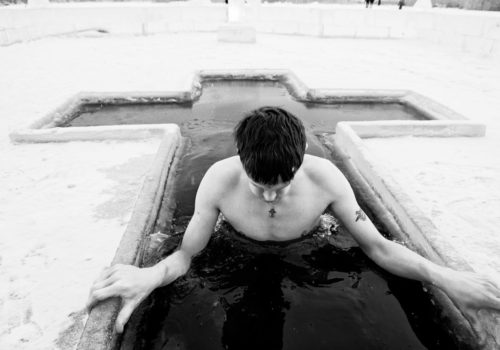At the turn of the new millennium Australian photographer Paul Blackmore packed up his life in Sydney and moved to Paris with the intent of furthering his career as a photojournalist.
“Even in 2000 in Australia photojournalism was really just an after thought so going to Paris, where photography is respected, and where there are so many venues for it, was like a wonderland,” he recalls. “The French really respect photojournalists and the public know photographers and their work and support them by buying books and going to galleries. Paris is an incredibly vibrant city for photojournalism and when I was there it was one of the great periods, a really vibrant time when there were a lot of photographers from around the world living there.”
Here in this enclave of creativity and collaboration Blackmore quickly found his feet. Within a short time he was shooting for Agence Rapho and traversing the northern hemisphere creating photo essays for the likes of Time, L’Express, Le Monde and Geo.
In between assignments Blackmore also spent time thinking about the personal projects he’d like to explore. One thought that persisted was the relationship between human beings and water, the essence of all life on earth. He travelled to Russia, the Middle East, South America and Japan and spent time on the sub-continent and island nations as well as his homeland. He photographed religious festivals, urban environments, remote communities, and leisure activities, all the time expanding the concept.
“While I was shooting I was thinking about how in a globalized world water ties us together. We are now so interconnected and that’s one of the elements that I tried to bring into this project,” he explains.
In Bangladesh Blackmore witnessed first hand the endemic pollution that is directly linked to the West’s predilection for outsourcing manufacturing in the name of cheap labour and high profits. As he saw the toll of these practices, both on the health of human beings and the planet, his work began to speak of environmental degradation also.
This body of work became “At Water’s Edge” which has toured the globe as an exhibition and is now a book. Shot in black and white, the dramatic contrasts of dark and light undulate across the paper, rippling like water itself, lapping at the edges of thought. Blackmore’s photographs are both lyrical and documentary in their composition. He has shared what he has learned, not only what he has seen, in the thoughtful framing of each scene.
From the vastness of the Pacific Ocean to the toxic black waters of the Buriganga River in Bangladesh; from the voodoo pilgrimage in Haiti, to the holidaymakers bobbing in the Black Sea; from the water pipes that carry fresh water to Mumbai’s elite to the squalid lives of refugees in Ethiopia, “At Water’s Edge” reminds us that no matter our race, gender or the size of our bank account, we all rely on fresh water for our very survival. It is a precious commodity and yet the devastation of our fresh waterways and oceans continues apace. While Blackmore’s photographs are in part celebratory, they also serve as a warning.
BOOK
At Water’s Edge
Paul Blackmore
Published by T&G Publishing Australia
306mm wide x 260mm deep / 12 x 10.4 in.
Hard Cover with Dust Jacket
132 pages with over 59 duotoned B/W Photographs
http://www.tgpublishing.com.au/collections/frontpage/products/paul-blackmore-released-3-2012
http://www.paulblackmore.com
















